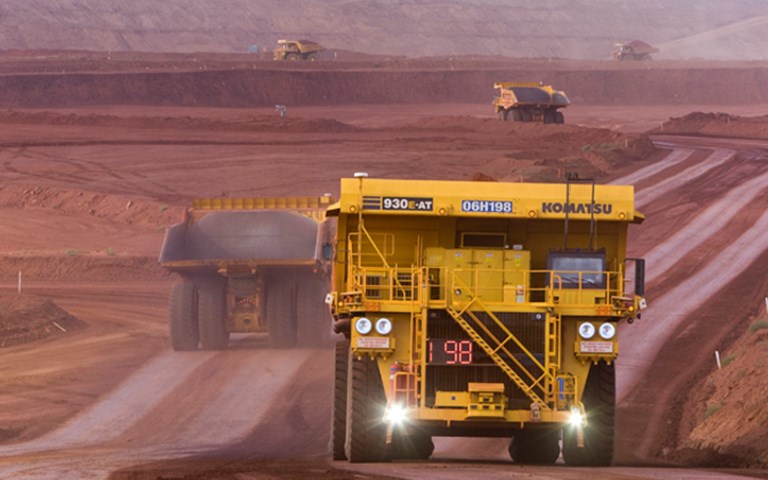Rio Tinto is replacing many of their trucks with autonomous Komatsu trucks. Ore at their Nammuldi and Yandicoogina iron mines are exclusively hauled by these driverless trucks. Courtesy of Rio Tinto
Over 20 million tonnes of material at Rio Tinto’s Australian iron ore mines are being moved by trucks every month – but at two mines, there has not been a driver behind the wheel since October.
The company operates a fleet of 69 driverless Komatsu trucks across three operations. The Nammuldi and Yandicoogina mines, both in Western Australia’s Pilbara belt, are now the first two in the world to use only driverless trucks. Hope Downs 4, also in the Pilbara, has a mix of driver-operated and driverless trucks. The company has 15 mines in the Pilbara region, where much of the workforce is fly-in, fly-out.
The initiative is part of the company’s Mine of the Future program, said James Petty, the general manager of mine fleet management and technology at Rio Tinto’s iron ore division. The trucks are managed from an operations centre in Perth, about 1,500 kilometres away.
The trucks have been online since pilot projects began in December 2008. Since then, productivity has increased by 12 per cent, while load and haul operating costs have decreased by about 13 per cent, according to Rio Tinto. Over the next three years, the company has reported it expects to save US$200 million a year by phasing in other automated equipment as part of its Mine of the Future program, including unmanned drills and trains.
The company is the largest owner and operator of autonomous haulage systems in the world, Petty said, but there are still plans for additional growth. The trucks will arrive at additional sites in the Pilbara belt in the coming years.




